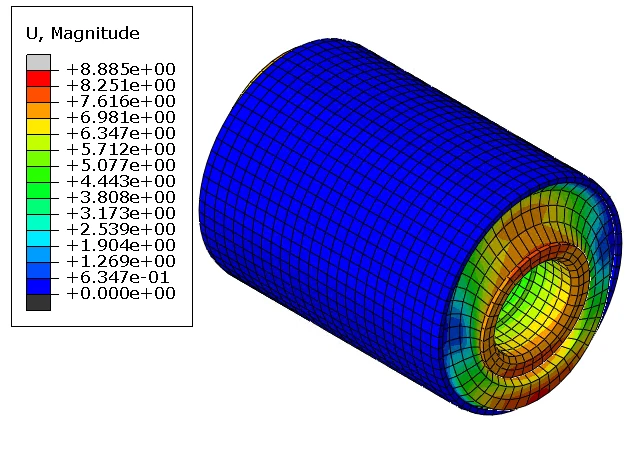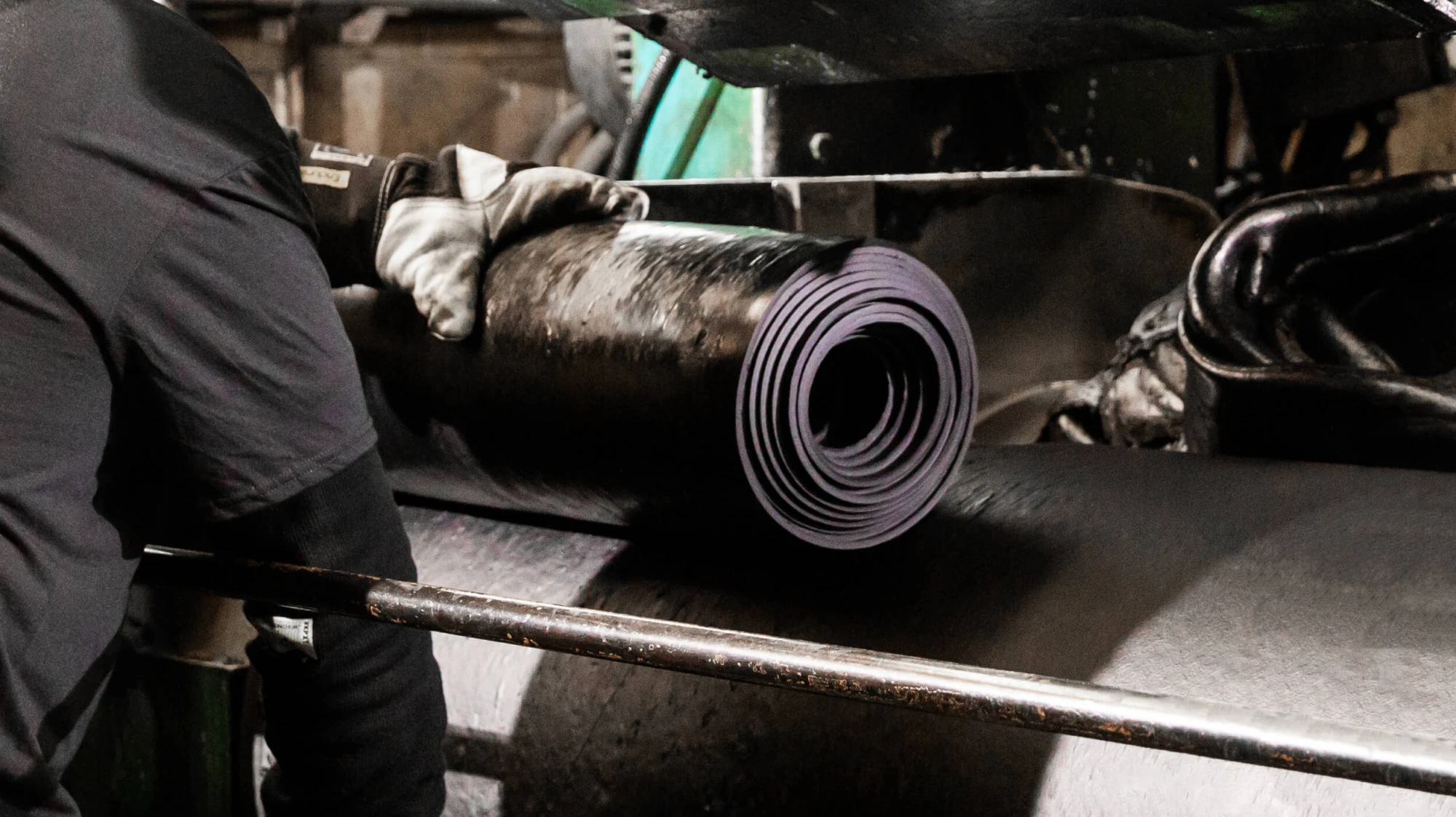For the agricultural industry, equipment failure isn’t an option when it means the difference between feeding people or losing crops. Every gasket, spring, bearing and tiny component has an essential role to play in keeping machinery running optimally and providing comfort for operators working long days.

Professionals in the agricultural sector face many challenges:
- High cost of equipment
- Difficult conditions for machinery
- Long hours that require increased comfort for equipment operators
Fortunately, solutions exist.
Rubber is a versatile material with many properties that make it ideal for agricultural equipment components. Custom-engineered rubber can address agricultural challenges by providing effective and sustainable solutions.
Read on to find out how rubber can be manipulated to suit your needs:
The advantages of custom-engineered rubber
Optimizing the reduction of noise, vibration, and harshness (NVH), as well as protecting vulnerable components from abrasion and temperature extremes can make a significant difference in extending the longevity of equipment and minimizing discomfort. The flexibility and durability of rubber make it ideal for isolating expensive, critical parts that need protection.
Rubber also dispels vibration and energy through damping. Compare that to a spring made of steel, for example, that has minimal damping: when it bottoms out, it’s severe. In contrast, rubber has a soft force deflection curve and won’t bottom out like steel. The amount of deformation that rubber can take is considerable; it can be molded into multiple shapes, and also be made directional which allows for creative, effective designs.
However, not all rubber components are equal. In trouble- prone applications, custom-engineered solutions provide impressive performance advantages. In this article we’ll cover four factors that affect the performance of custom rubber solutions:
- Design
- Formulation
- Bonding
- Predictability
How design improves performance
To meet specifications, rubber can be molded using different processes including compression, injection and transfer. However, optimized rubber parts development starts much earlier. Requirements such as minimizing rolling resistance need to be considered in the design phase.

By evaluating big-picture issues, designers can determine if a barrier, cap, or seal could help remedy a problem. Specific expertise in rubber component design provides an understanding of how rubber acts structurally as an isolator and can help protect other components under different operating conditions.
Design phase considerations also include meeting manufacturing objectives with cost and sourcing constraints. A well-executed design saves invaluable time in later production phases. Custom-made rubber can provide exceptional results, but require a design based in deep knowledge of the behavior of rubber.

Why formulation is important
Every component can be formulated to withstand different demands, whether it’s high temperatures, wear and tear from rotation or abrasion or another challenge in the agricultural environment. For example, tractor parts are subject to fatigue and exposed to dirt, mud, water, crop debris, and harsh environmental conditions. Sprayers (whether trailed, carried or self-propelled) are subjected to chemicals that could affect certain equipment parts. Rubber components can be designed to resist chemicals, abrasion and dirt.
A part with a specific rubber formula can be used as an effective barrier to protect critical, expensive components and help increase their durability. Here are some examples of different types of rubber and their applications:
- Natural rubber is used in automotive parts, pipes, industrial equipment and more applications
- Silicone is used to make gaskets due to its chemical-resistant and heat-resistant properties.
- Fluorocarbon is used in high-performance applications such as aircraft engine seals.
Having knowledge of the different families of rubber is essential, because some families will be better suited to different conditions. This doesn’t mean that every part needs to be formulated from scratch. With a library of formulations, you can select a compound in the right family that’s well-suited to the application and adapt it to meet any specific needs.
Not all types of rubber have the same properties, so the specific formulation, curing process and surface treatment are important to provide the best lifecycle and fatigue behavior.

How bonding affects durability
With an understanding of the science of bonding, the preferred adhesive and procedures can be designated to provide the most advantageous method for each application. Surface preparation alone requires the correct level of roughness, cleanliness and elapsed time. If the prepared surface is left exposed for too long, it can adversely affect the future bond strength. The adhesive application process must be developed to provide the right thickness, dispersion, and drying time for the adhesive, taking into account multiple layers that may be needed.
Careful bonding helps prevent problems such as corrosion, which results in improved durability.
How simulations improve predictability
Different scenarios create varying types of noise, vibration, and harshness. To develop a component that can withstand specific stressors, simulating its environment is necessary. With the correct simulation, engineers can design the part needed to isolate the vehicle or the cabin or the system. Modal analysis is used to predict the vibration frequencies and mode shapes of components, and the noise patterns they experience. The system is simulated using finite element analysis (FEA) software, with parameters added to estimate the stiffness of the rubber components.
With this information, engineers understand how the system acts, and can use that understanding as the foundation for design. Simulations provide the data needed to evaluate which solution will be best for specific operating conditions. Analysis can be done for various stiffness levels until the desired outcome is achieved. Standardized tests also provide data on physical properties such as force stop failure.
In a well-equipped lab, the behavior of different parts can be predicted when those parts are under strain and stress. By starting with a desired behavior in the design phase, and developing the formulation, bonding, and every step of the manufacturing process appropriately, the final parts are engineered for optimized performance.
For 50+ years, manufacturers have relied on Soucy Baron to design, test, and produce performance-critical elastomeric parts that meet challenging requirements.
With our technical dominance in materials engineering, a library of over 900 recipes, and in-house formula development and mixing, we provide quality, high- performance compounds for your component needs.
Soucy Baron helps you:
- Improve the performance of your agricultural equipment
- Increase equipment durability
- Protect expensive parts
- Optimize operator comfort
- Reduce vibration
- And much more
To learn more about how custom rubber solutions can improve the durability of agricultural equipment, contact us.

Soucy Baron is not simply a manufacturer of elastomer parts; We are an end-to-end logistics partner, dedicated to the success of your project above all else. Working with Soucy Baron means you’ve got a partner who understands your challenges.